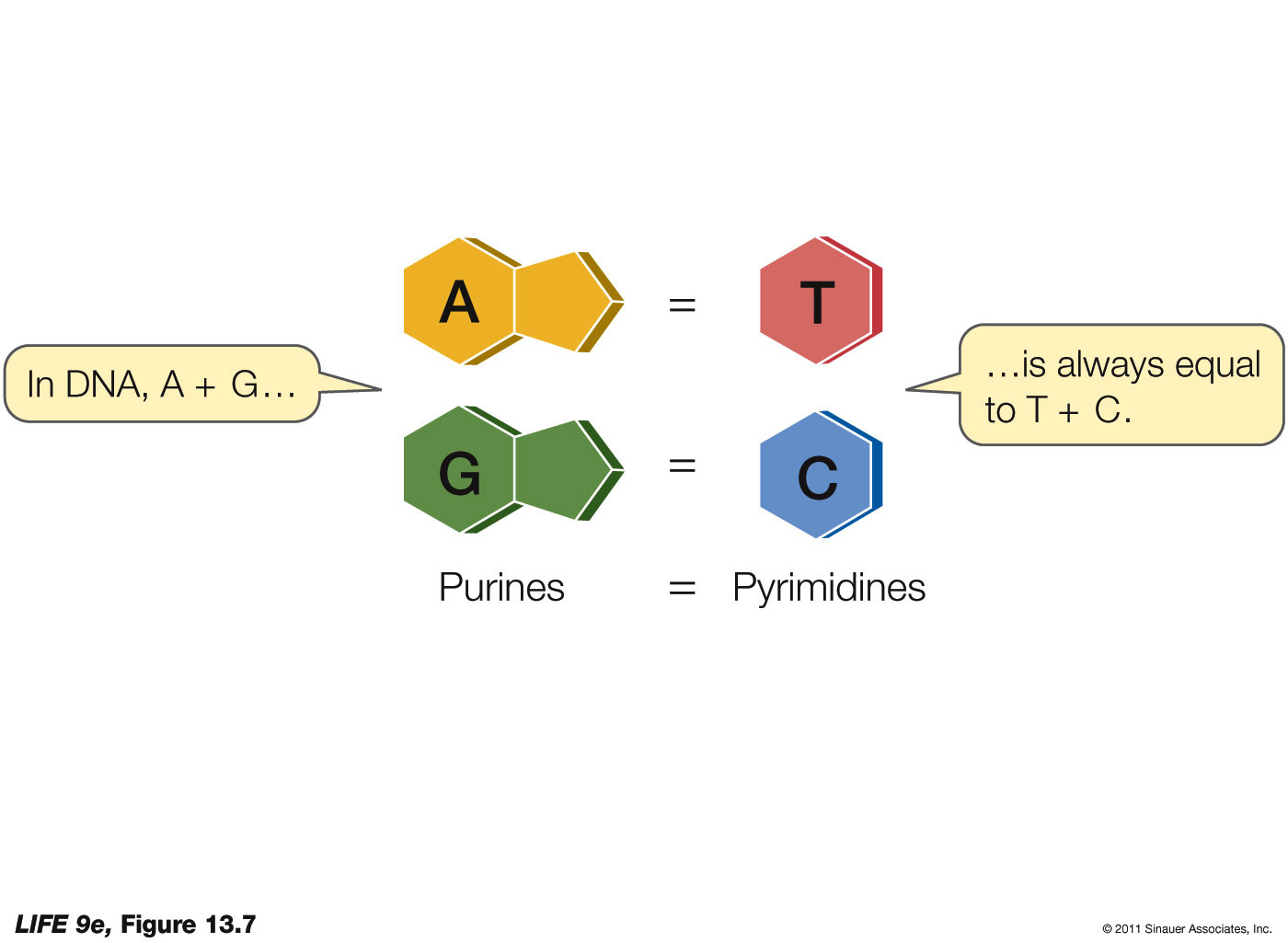Table of Contents
Introduction
- Chargaff’s rule is a scientific principle in molecular biology that states the proportion of adenine (A) and thymine (T) nucleotides in DNA is always equal, and the proportion of cytosine (C) and guanine (G) nucleotides in DNA is also always equal.
- This rule was established by biochemist Erwin Chargaff in the 1950s and is considered to be one of the key pieces of evidence for the discovery of the double-helix structure of DNA.
Background
- Prior to Chargaff’s rule, the scientific community believed that DNA was a simple structure composed of repeating units of nucleotides, but there was no clear understanding of the exact composition of DNA.
- Chargaff’s experiments involved the analysis of the base composition of DNA from a variety of species and he found that the proportions of the four nucleotides were not equal, as previously thought.
Evidence for Chargaff’s Rule
- Chargaff’s rule was established through extensive laboratory experiments in which he measured the ratio of A and T, and C and G nucleotides in DNA samples from various species.
- He found that in every sample, the proportion of A to T was always equal, and the proportion of C to G was also always equal.
Implications of Chargaff’s Rule
- Chargaff’s rule played a crucial role in the discovery of the double-helix structure of DNA, as it provided evidence that the structure of DNA was not simply a repeating chain of nucleotides, but rather a complex, tightly packed arrangement of nucleotides in which the proportion of A to T and C to G is always equal.
- The discovery of Chargaff’s rule also led to a greater understanding of the role of nucleotides in DNA replication and transcription, as it provided a baseline for the proportion of nucleotides required for the correct replication of DNA.
Limitations of Chargaff’s Rule
- Chargaff’s rule is based on the analysis of DNA samples from a limited number of species, and it is not universally applicable to all species.
- The rule is also limited by the sample preparation techniques used at the time, as some DNA samples may have been degraded during the extraction process, affecting the accuracy of the results.
Conclusion
- Chargaff’s rule is a crucial principle in molecular biology that provides evidence for the double-helix structure of DNA and the role of nucleotides in DNA replication and transcription.
- Although there are limitations to Chargaff’s rule, it remains an important piece of scientific evidence and continues to be an area of ongoing research in molecular biology.
